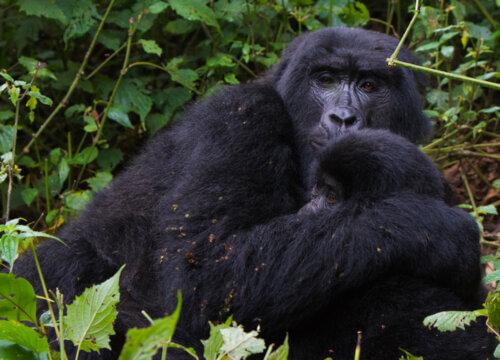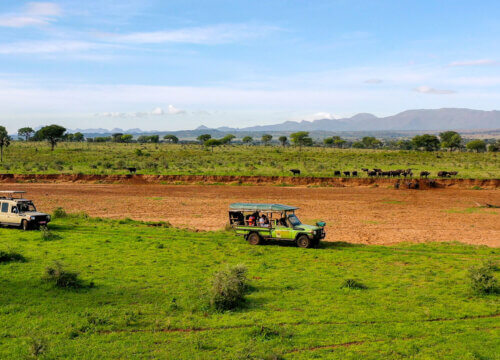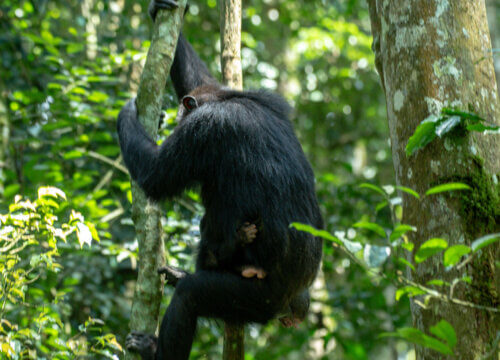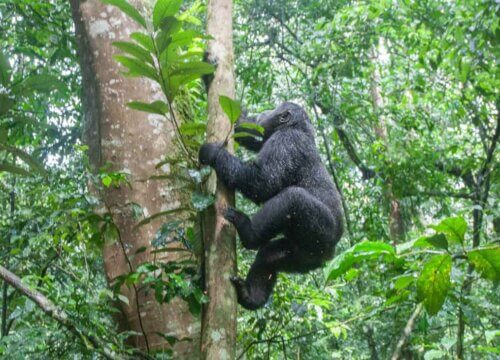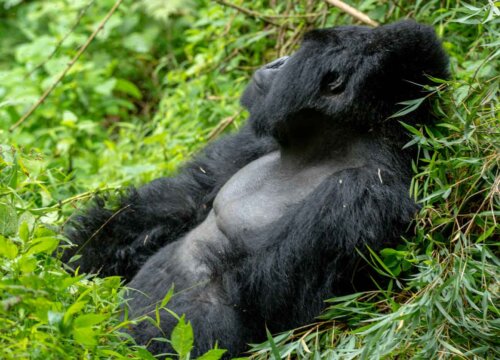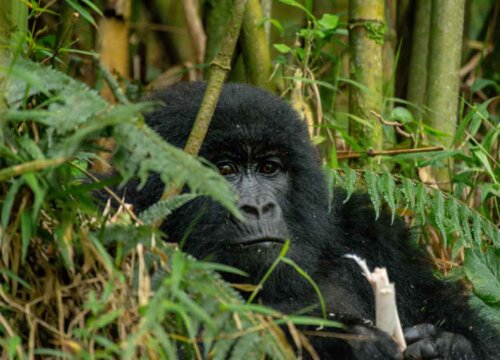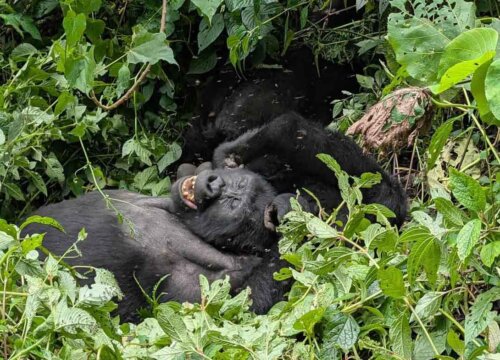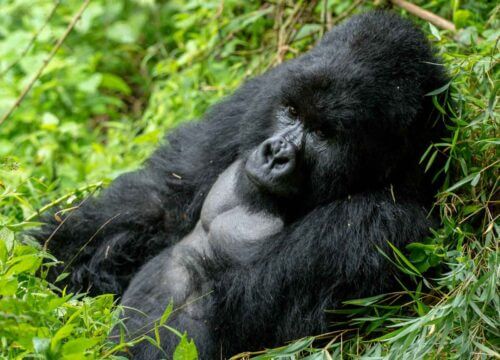What are unhabituated mountain gorillas
What are unhabituated mountain gorillas
Unhabituated mountain gorillas are groups of gorillas that have not been accustomed to human presence. Unlike habituated gorillas, which undergo a gradual process of getting used to researchers, trackers and tourists, unhabituated gorillas remain wild and cautious of humans. They live undisturbed in their natural habitat avoiding contact with people.
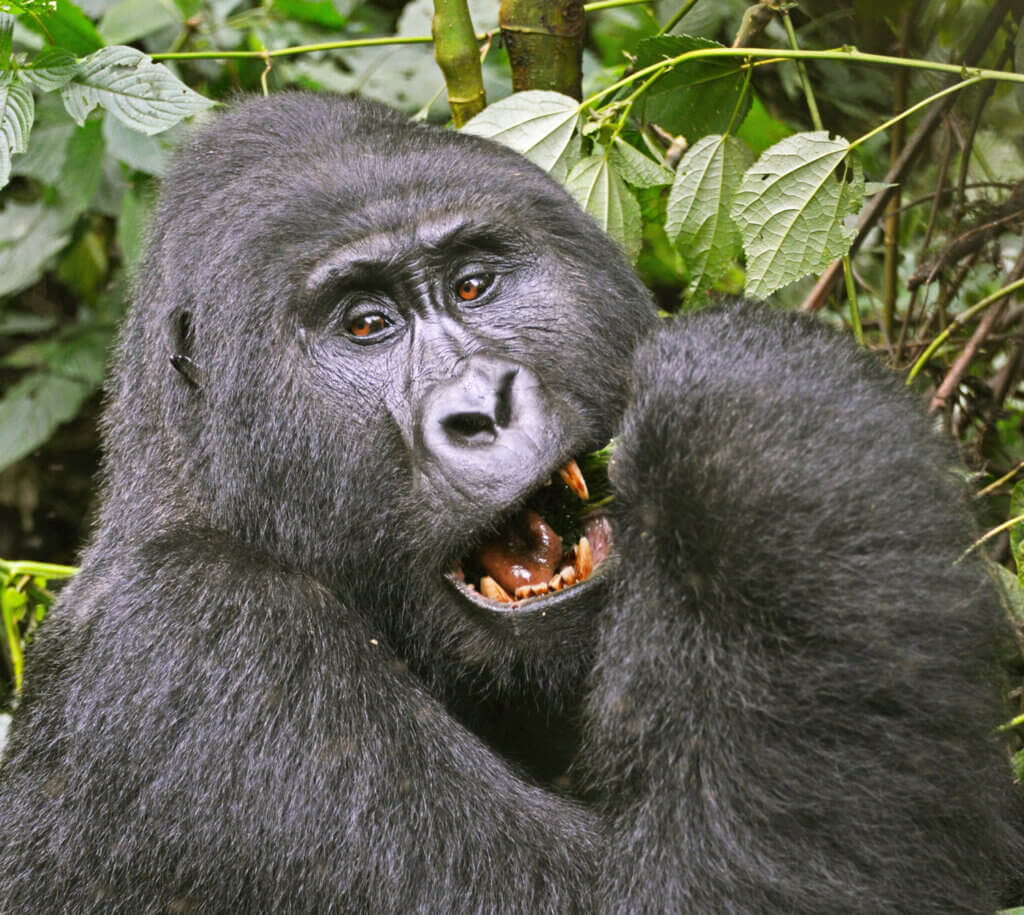
Visiting unhabituated mountain gorillas in the wilderness
Visiting unhabituated mountain gorillas in the wilderness is an extraordinary experience that connects you to the raw beauty of nature and offers a rare insight into the lives of these amazing animals. Unlike habituated gorillas that are accustomed to human presence, unhabituated mountain gorillas live without much interaction with people. This makes encountering them even more special and unpredictable. Their behavior remains entirely natural and observing them in this state is like stepping into a world untouched by human influence. However, it is important to approach this experience with respect, patience and an understanding of the delicate balance of their ecosystem.
The adventure of visiting unhabituated gorillas usually involves trekking through dense forests sometimes for hours depending on their location. The journey itself is part of the magic. As you cross through towering trees and cross streams, you will feel immersed in the wilderness. Along the way, you might spot other wildlife from colorful birds to playful monkeys which makes your trek even more rewarding.
It is important to remember that visiting these creatures requires adhering to strict guidelines to ensure their safety and well-being. Maintaining a respectful distance helps minimize stress on the animals and reduces the risk of transmitting diseases. Following the guidance of experienced trackers and conservationists is essential to make this experience safe for both humans and gorillas. This type of encounter also plays a significant role in conservation efforts. By supporting eco-tourism initiatives that prioritize the protection of gorilla habitats, you contribute to preserving these endangered species for future generations.
Safety precautions while visiting unhabituated mountain gorillas or Responsible tourism practices.
Maintain a safe distance from them
They are not familiar with humans which can make them more unpredictable. Always maintain a distance of at least 7 meters from the gorillas. This space reduces the risk of transmitting diseases to them and minimizes the chance of them feeling threatened by your presence.
Follow the guide’s instructions while visiting them
Your guide is trained to cross the terrain and understand there behavior. Always follow their instructions carefully. They know how to read the gorillas’ body language and will advise you on what to do if the animals show signs of stress or aggression.
Avoid direct eye contact with them
In gorilla behavior, direct eye contact can be perceived as a challenge or threat. To avoid provoking unhabituated mountain gorillas, keep your gaze low or look away if a gorilla looks directly at you. This gesture signals that you mean no harm.
Stay quiet and move slowly while trekking
Sudden movements or loud noises can frighten them which potentially leads to defensive reactions. Speak in whispers, walk lightly and avoid abrupt actions to ensure a calm and peaceful interaction.
Do not approach or touch them
No matter how tempting it may be, never attempt to approach or touch a gorilla. Unhabituated mountain gorillas are highly protective of their space and any intrusion provokes aggression. Respect their boundaries at all times.
Wear neutral-colored clothes
Bright colors can attract unnecessary attention or cause confusion among unhabituated mountain gorillas. Choose neutral colors like green, brown or khaki that blend in with the natural environment helping you remain less conspicuous.
Avoid flash photography
Flash photography can disturb or alarm unhabituated mountain gorillas especially those not used to human presence. If you plan to take photos, ensure your camera’s flash is turned off before entering their home.
Do not leave behind food or litter
Feeding unhabituated mountain gorillas or leaving behind litter can disrupt their natural diet and environment. It may also expose them to harmful bacteria or diseases. Always carry any waste back with you and avoid eating near them.
Be aware of health risks
Unhabituated Mountain gorillas share about 98% of their DNA with humans which makes them highly vulnerable to human illnesses. If you are feeling unwell, it is best to postpone your visit to protect unhabituated mountain gorillas from potential infections.
Respect their behavior and habitat
Unhabituated mountain gorillas are wild animals that follow their instincts. If they charge or make warning sounds, remain calm, bow down and avoid making eye contact. Never run, as this could escalate the situation. Additionally, respect their forest home by not damaging plants or disturbing other wildlife. Contact Giant Holiday Safaris for a trip to see unhabituated mountain gorillas.
What are the threats to unhabituated mountain gorillas?
Habitat loss and deforestation
The forests that they call home are under constant pressure from human expansion. Agriculture, logging and infrastructure development continue to intrude their home. For unhabituated mountain gorillas, this loss of forest cover can be disastrous as they rely heavily on their environment for food, shelter and safety. Without a secure habitat, their survival becomes increasingly risky.
Poaching and snaring
Although poaching for bushmeat or live animal trade usually targets other species, unhabituated mountain gorillas often become unintended victims. They are particularly vulnerable to snares set for smaller animals. These traps can cause severe injuries or even death for gorillas that accidentally become entangled. Poaching also disrupts family groups, leaving young gorillas orphaned and exposed to danger.
Human to wildlife conflict
As human populations grow near gorilla habitats, conflicts between humans and wildlife become more frequent. Farmers may view them as pests if they wander into agricultural areas in search of food. In retaliation, some humans may resort to harmful measures to protect their crops. For unhabituated mountain gorillas who are less familiar with humans, such encounters can be particularly dangerous.
Disease transmission
One of the lesser-known threats to unhabituated mountain gorillas is disease transmission from humans or livestock. Even though these gorillas avoid human contact, diseases can spread indirectly through contaminated water sources or shared environments. Respiratory infections, parasites and other illnesses can significantly impact unhabituated mountain gorilla populations that lack immunity to human-borne diseases.
Climate change
The effects of climate change are increasingly evident in gorilla habitats. Changed rainfall patterns and rising temperatures can disrupt the delicate ecosystems these primates depend on. Changes in vegetation growth may reduce the availability of key food sources for these creatures which forces them to adapt or migrate to less suitable areas where survival becomes even more challenging.
Mining and resource extraction
Illegal mining operations in protected areas present another major threat to these creatures. The extraction of minerals like gold, coltan and tin destroys forest habitats and contaminates water sources with toxic chemicals. Additionally, the presence of miners usually leads to increased hunting and poaching in these remote regions, further endangering gorilla populations.
Natural disasters
Unpredictable natural disasters such as landslides, volcanic eruptions or forest fires pose a significant risk to these creatures living in high-altitude environments. For unhabituated groups that are already isolated and harder to monitor, the impact of such disasters can be devastating, wiping out entire populations without warning or intervention.
Lack of conservation funding
Conservation efforts often focus on habituated gorilla groups because they attract eco-tourism revenue which funds protection programs. They do not benefit from such initiatives to the same extent. Limited funding means fewer resources are allocated to monitoring these elusive groups or addressing threats specific to their survival.
Political instability and armed conflict
Many mountain gorilla habitats are located in regions plagued by political instability and armed conflict. They are particularly vulnerable in such conditions because they are less likely to be monitored or protected during times of unrest. Armed groups operating in these areas may exploit natural resources or use forests as hideouts putting additional pressure on wildlife populations.
Inbreeding and genetic isolation
With fewer than 1100 mountain gorillas remaining in the wild, genetic diversity is already a concern for the species as a whole. Unhabituated mountain gorillas that live in isolated forests face an even greater risk of inbreeding due to limited mating opportunities. Over time, this genetic blockage can lead to reduced fertility, increased vulnerability to diseases and other health issues that threaten population viability.
Explorer More Safaris
- 14-Days Uganda Safari Gorilla Chimpanzees and Wildlife
- 12 Days Gorillas and Chimpanzees Wildlife Safari
- 10 days best of uganda primates & wildlife safari
- 6 Days Gorillas and Chimpanzee Trekking Safari
- 3 Day Bwindi Gorilla Trekking Safari
- 4 Day Uganda Gorilla Trekking and Wildlife Safari
- 4 Days Gorilla Trekking and Adventure Safari
- 5 Days Uganda Gorillas and Chimpanzee Tracking Safari
- 4-Day Rwanda Gorilla Trekking and Golden Monkey Tracking Safari
- 5 Day Gorilla Habituation and Chimp Trekking
- 4-Day Uganda & Rwanda Gorilla Trekking Tour
- 3 Days Bwindi Gorilla Trekking Ugnada from Rwanda
- 10 Days Uganda Primates and Game Safari

